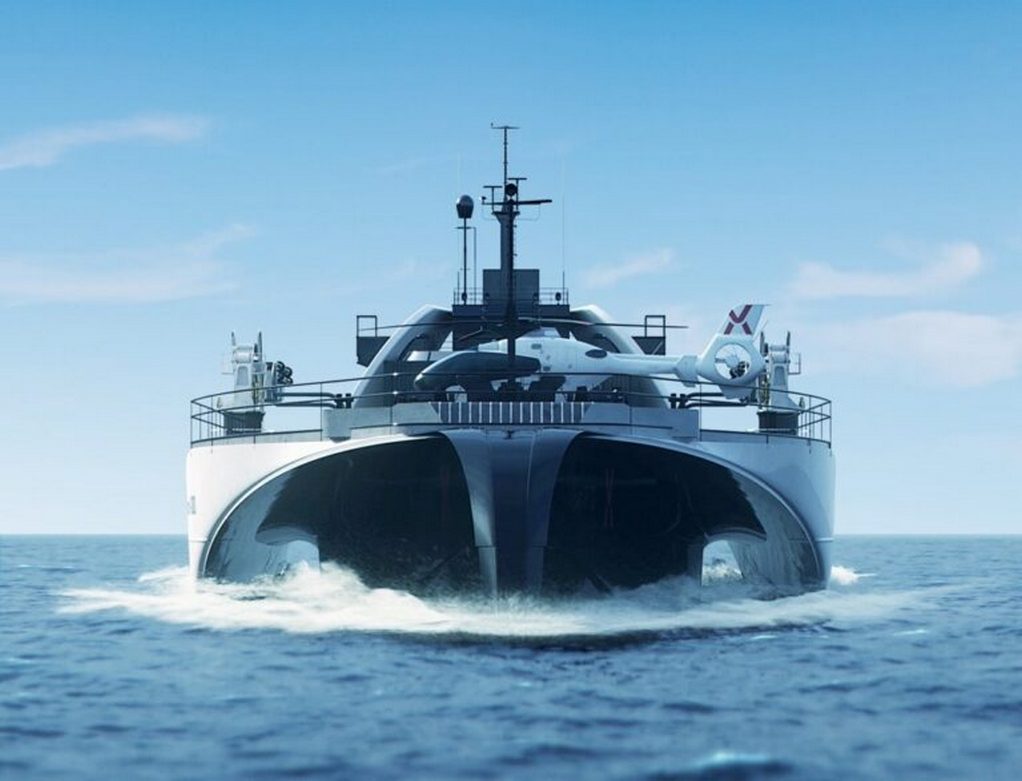PowerX, the Japanese battery startup that first announced plans for a ship-based alternative to subseas cables back in August 2021, has now released more details on its Power Ark 100 battery tanker.
Unveiled at the Bariship International Maritime Exhibition held in Imabari City, Ehime Prefecture, Japan, the first battery tanker is scheduled for domestic and international field testing starting in 2026. The electrically propelled vessel will be 140 meters long and will be equipped with 96 containerized marine batteries, providing a total capacity of 241 MWh.
First Power Ark 100 battery tanker will be 140 meters long and pack 241 MWh of battery capacity.
The onboard battery system is based on PowerX’s proprietary module design, featuring lithium iron phosphate (LFP) battery cells designed to have a lifespan of over 6,000 cycles. Additionally, the battery system is highly scalable, allowing for the installation of additional batteries to create larger electric transport vessels such as Power Ark 1000 or even larger sizes to meet specific mission requirements. The system includes dedicated gas emission control and fire suppression mechanisms to ensure safety. Real-time monitoring of the battery system, charging controllers, and power conversion systems enhances these safety measures.
All batteries will be manufactured in-house in Okayama Prefecture and are scheduled to obtain international ship classification certifications and meet applicable standards, such as those set by DNV and Class NK, undergoing rigorous testing. Delivery of the batteries is scheduled to start by mid-2024.
A new company, Ocean Power Grid Inc., will be established in the third quarter of 2023 that will own, sell, and operate the battery tankers in Japan and abroad. PowerX is seeking business partners worldwide for this new technology and business endeavor.
PowerX has signed a memorandum of understanding and a partnership agreement with Kyushu Electric Power Co., Ltd. and the City of Yokohama to pursue the new maritime power transmission concept and achieve carbon-neutral ports.
Their onboard battery systems allow battery tankers to store and transport surplus electricity generated from renewable sources. Decommissioned or idle thermal power plants located near ports can be retrofitted into charge/discharge points for the Battery Tankers, where the power is transmitted to users via grid connections on the land, enabling further effective use of renewable energy.
PowerX says that areas with high potential for renewable energy generation are often distant from urban areas and regions with high power demand. It says that, given the current energy density of lithium-ion battery cells, the battery tanker is an optimal solution for short-distance maritime power transmission from land to land, complementing existing inter-regional grid transmission lines. In Japan, for example, a battery tanker could carry power from regions with high renewable energy supply potential, such as Kyushu and Hokkaido, to high-demand areas of Honshu or for inter-island power transmission.
As the energy density of batteries improves and their cost decreases, it is expected that longer-distance maritime transmission from offshore wind power plants to the land will become feasible. Battery tankers offer a practical solution, especially in Japan, which is prone to earthquakes and has deep-sea surroundings. The ship-based solution resolves issues such as extended downtime from undersea cable malfunctions and repairs and the high costs associated with ultra-high voltage connections and substations. As a result, says PowerX, the battery tankers will enable the installation of offshore wind farms in areas where undersea cable deployment presents challenges.
Tags: Ark 1000, Design, PowerX, Ship



Recent Posts
DP World and Asian Terminals Inc deploy first fleet of electric internal transfer vehicles in the Philippines
Lloyd’s Register Decarbonisation Hub Joins Mærsk Mc-Kinney Møller Center as Knowledge Partner
Wärtsilä engines selected to deliver reliable power for US data center
Japan’s First LNG-Powered Cruise Ship Begins Operations with Shore Power Capabilities
Amogy Secures Additional $23 Million to Advance Ammonia-to-Power Solutions and Expand in Asia
NEMO strengthens global role with official status from IMO and IAEA
Summit at SRM University – AP to Drive Dialogue on Green Hydrogen Innovation
Goltens Partners with Orcan Energy to Expand Marine Waste Heat Recovery Solutions